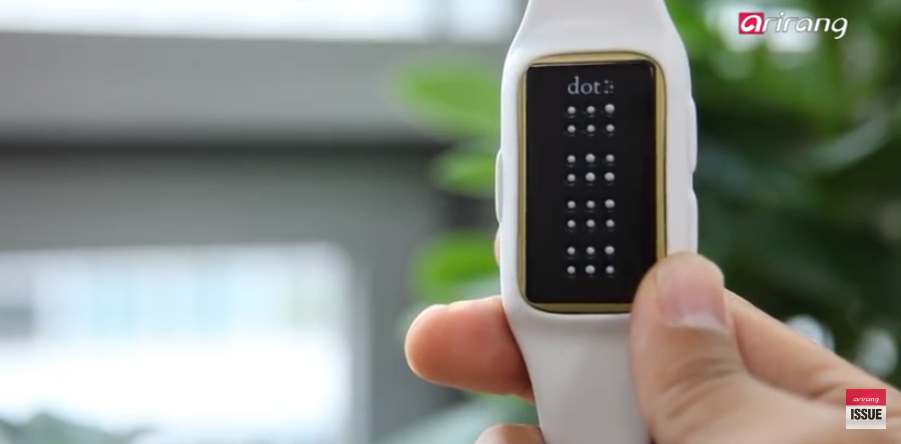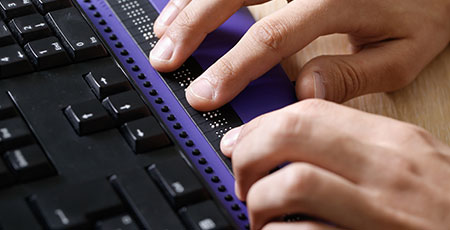Braille Displays and Notetakers: Key Tools for Learning and Work
Braille Displays and Notetakers: Key Tools for Learning and Work
Blog Article
Discover Innovative Tools Developed for the Aesthetically Damaged
The growth of innovative tools for the aesthetically impaired stands for a significant improvement in availability and freedom. Technologies such as wise glasses with AI capabilities and mobile applications created to offer acoustic descriptions are improving day-to-day experiences for individuals.
Smart Glasses for Navigating

Smart glasses developed for navigating are changing the way aesthetically damaged individuals communicate with their setting. These advanced devices make use of a mix of cam technology, expert system, and auditory responses to provide real-time details regarding surroundings. By utilizing challenge detection systems, wise glasses can notify users to prospective risks, making it possible for much safer movement in both unknown and familiar settings.
The assimilation of GPS modern technology additionally enhances navigation capabilities, permitting users to obtain acoustic instructions as they move. This hands-free technique not only cultivates independence but likewise encourages aesthetically damaged individuals to browse urban landscapes with raised confidence. In addition, lots of smart glasses are geared up with attributes that determine spots and street signs, providing contextual details that improves the individual experience.
Furthermore, the development of these devices is continuously progressing, with companies functioning to improve the precision of things acknowledgment and broaden the variety of navigational features. As clever glasses become extra easily accessible and budget-friendly, they hold the potential to substantially transform everyday life for visually impaired users. Ultimately, these innovative tools stand for a vital action towards inclusivity, offering enhanced wheelchair and a higher feeling of freedom for individuals browsing the globe around them.

Mobile Apps for Daily Living
Just how can mobile applications boost the day-to-days live of aesthetically damaged individuals? Mobile apps are transforming the way visually damaged users navigate their environments, handle daily jobs, and gain access to info. These applications offer necessary support via numerous capabilities, cultivating independence and enhancing top quality of life.
A number of ingenious mobile applications are designed especially for daily living. Apps like Be My Eyes attach aesthetically impaired customers with sighted volunteers via video clip telephone calls, enabling them to receive real-time support with tasks such as checking out labels or browsing unfamiliar spaces. Similarly, Seeing AI, developed by Microsoft, makes use of expert system to explain environments, checked out text, and determine things, properly changing a smart device right into a powerful tool for day-to-day help.
In addition, navigating apps tailored for the aesthetically damaged, such as Aira and BlindSquare, offer audio-based directions and environmental details, making it possible for individuals to traverse their surroundings securely and with confidence. Beyond navigation and immediate support, mobile apps likewise support company and task management, with features that assist users establish suggestions, develop to-do listings, and track consultations. In summary, mobile applications work as crucial resources, encouraging visually impaired individuals to lead even more independent and fulfilling lives.
Wearable Technologies for Support
Empowerment with modern technology is increasingly apparent in the world of wearable tools made to help aesthetically damaged people. These innovative devices incorporate perfectly into everyday life, improving navigating and giving necessary feedback to individuals. As an example, wise glasses outfitted with electronic cameras can review and identify faces message aloud, permitting customers to communicate more with confidence in specialist and social settings.
One more noteworthy improvement is using haptic comments systems in wearable devices. These systems utilize vibrations or various other tactile signals to communicate information regarding the user's setting, go to website such as obstacles or modifications in terrain, boosting mobility and safety and security. Wearable innovations likewise include wristbands that connect to mobile phones, notifying users to notices via refined vibrations, hence improving connection without reliance on aesthetic hints.
As these innovations continue to develop, they are not just boosting independence for aesthetically impaired people but likewise fostering a greater feeling of inclusion in culture. By connecting the space in between obstacles dealt with in day-to-day living and the possibility for autonomy, wearable innovations act as crucial tools in the mission for equal rights and empowerment for those with aesthetic disabilities.
Audio Summary Tools
Sound description devices play a critical function in enhancing availability for visually damaged people, giving them with the capability to engage with visual media. Smart glasses for the visually impaired. These devices supply narrated summaries of crucial visual aspects in films, tv shows, and live performances, making sure that users can completely understand the context and emotions communicated via visuals
Sound description can be incorporated right into different systems, including streaming solutions, movie theater screenings, and live cinema. Several popular streaming solutions currently include audio summary as an ease of access function, permitting audiences to choose it quickly. Along with traditional media, specialized applications additionally exist, offering audio descriptions for art exhibitions, galleries, and other social events.
The efficiency of audio summary depends upon the skill of the narrators, who must share visual details succinctly without diminishing the initial sound. Advancements in this area are also paving the means for even more customized experiences, where users can readjust the degree of detail and pacing according to their choices.
Braille Innovations and Instruments
Braille devices and developments have actually considerably changed the means aesthetically impaired people connect with message and info. Modern innovations have actually led to the growth of versatile devices that improve proficiency and freedom amongst individuals.
Additionally, portable Braille notetakers combine typical Braille input with modern performances, promoting note-taking, scheduling, and file modifying on the move. Mobility aids for visually impaired users. These compact gadgets usually feature text-to-speech capabilities, connecting the gap in between Braille her explanation and acoustic details
On top of that, innovative Braille printers have actually arised, enabling customers to generate Braille labels, papers, and educational products effectively. This access fosters greater engagement in specialist and academic atmospheres, ultimately promoting inclusivity.
Additionally, research into wise Braille innovations remains to increase. Devices that incorporate artificial knowledge are being discovered to provide real-time navigating support and contextual info, boosting the individual experience in varied settings. Overall, these technologies show a dedication to equipping visually damaged people through innovation, ensuring they can easily access and involve with the world around them.

Verdict
The innovation of cutting-edge tools for the aesthetically impaired considerably boosts self-reliance and top quality of life. These innovations not only foster better addition but also advertise freedom in day-to-day tasks, ultimately adding to a more obtainable and fair society for visually impaired people.
As clever glasses come to be more budget-friendly and accessible, they hold the potential to substantially change everyday life for aesthetically damaged users. Mobile apps are revolutionizing the method aesthetically damaged customers browse their environments, handle daily jobs, and accessibility information. Apps like Be My Eyes connect aesthetically damaged customers navigate to these guys with sighted volunteers through video calls, allowing them to receive real-time assistance with tasks such as reading labels or navigating strange rooms.Additionally, navigation applications tailored for the aesthetically damaged, such as Aira and BlindSquare, use audio-based directions and environmental info, allowing individuals to traverse their surroundings safely and confidently.The development of ingenious devices for the aesthetically damaged substantially boosts freedom and top quality of life.
Report this page